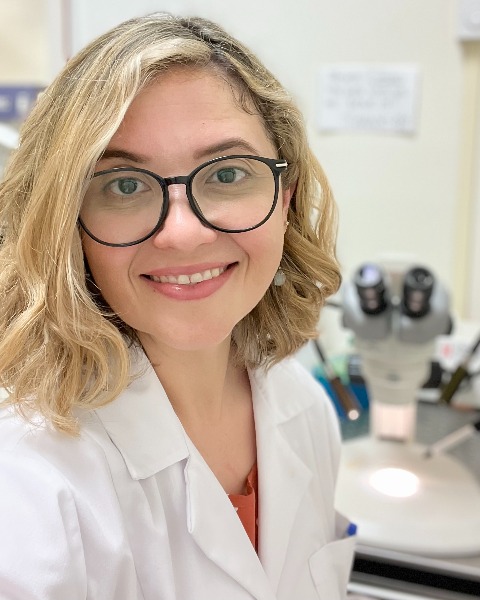PBT
Student Competition 10-Minute Paper
Grad 10-min: PBT, Vector Biology
Osmoregulation and thermoregulation in the lone star tick (Amblyomma americanum): Breaking a sweat!
On-Demand

Paulina Maldonado-Ruiz
Kansas State University
Manhattan, Kansas- YP
Yoonseong Park
Kansas State University
Manhattan, Kansas
Presenting Author(s)
Co-Author(s)
Lone star ticks (Amblyomma americanum) are important vectors of diseases to humans and animals and widely distributed in the Midwest and eastern United States. This important blood-feeding ectoparasite spends over 90% of their lifetime off of the host. Their survival during non-feeding periods largely depends on their osmoregulation. The study of tick osmoregulatory physiology in our laboratory has included the mechanisms of gaining water and the loss. In this study, we have investigated a novel excretion physiology. We observed that metastriate ticks (including the lone star tick) can excrete liquid through their numerous dermal glands located under the cuticle. This response is triggered by mechanical stimulation and by heat, thus we called this response: “sweating” as it is similar to sweating of higher mammals. First, we demonstrated the role of sweating in evaporative cooling at high temperature. In further studies investigating the molecular components involved in the sweating, we identified that sweating is elicited by serotonin and the process is inhibited by ouabain (Na/K-ATPase inhibitor). Mining transcript sequences of different tick tissues and sequence read archives (SRA), we identified a single serotonin receptor (5-HT1A) in the epidermal-enriched carcass among four serotonin receptor homologies found in Ixodes genome sequence. With further characterization of the 5-HT1A and the dermal glands, we aim to develop a mean to disrupt water homeostasis by blocking or inducing tick excretion leading to tick death.


